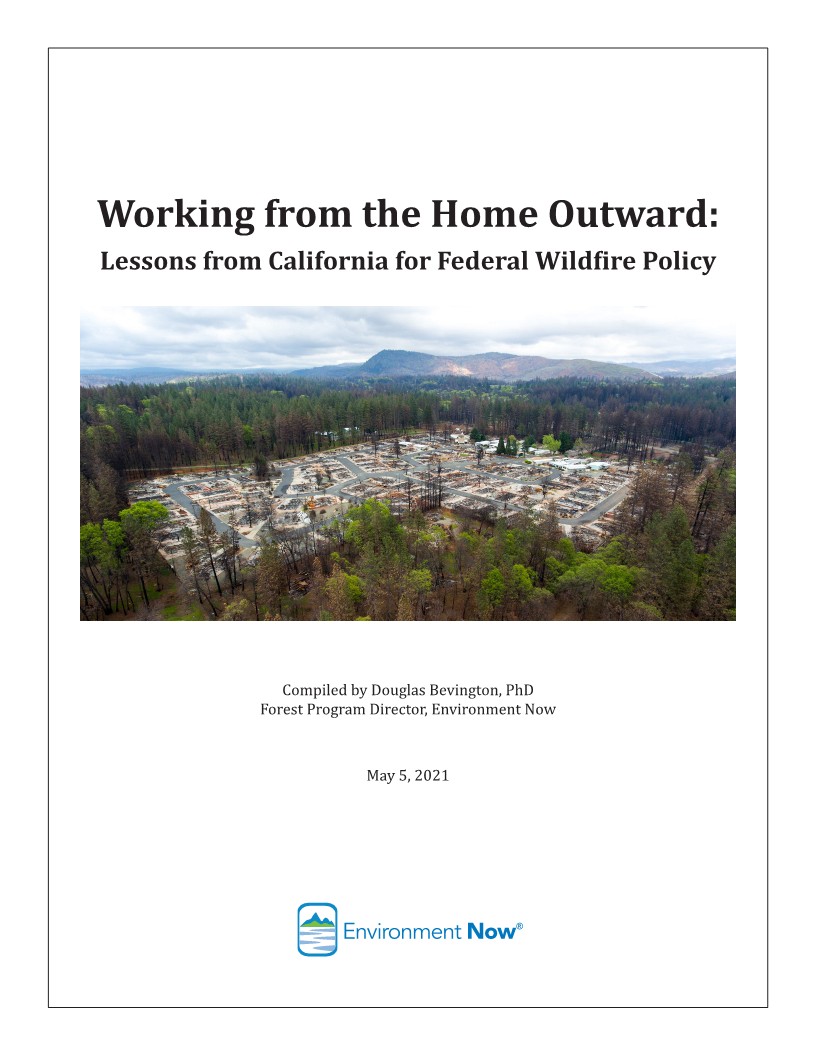The Environment Now Foundation recently released a new wildfire report, From the Home Outward: Lessons from California for Federal Wildfire Policy, which details strategies for mitigating risks to communities while recognizing the important role fire plays in many of California’s unique ecosystems. The report’s sections were co-authored by various fire scientists, ecologists, and conservationists, including ForestWatch’s own conservation director, Bryant Baker.
The new report’s executive summary includes several recommendations for federal, state, and local governments as policymakers attempt to reduce wildfire risks in California:
- The dominant current approaches to wildfire policy promoted by the Forest Service— wildlands fire suppression and forest alteration through extensive tree-cutting—are failing to keep the public safe, with record losses of lives and homes during wildfires.
- In contrast, an approach of “working from the home outward,” focusing on fire-safety home retrofits and the zone immediately around houses and communities, offers the most effective and cost-efficient tools for increasing public safety during wildfires.
- Most wildfire-related government funding subsidizes forest alteration and fire suppression rather than home-outward actions, even in “all of the above” approaches to fire policy. Less than 4% of California’s 2021 fire-related budget is for “community hardening.”
- A new task force is needed to answer this central question—Which actions will produce the greatest public safety benefits during wildfires in the most cost-efficient manner?
- This task force should include, but not be limited to: public safety experts, scientists not reliant on Forest Service funding, the insurance industry, fire managers outside of the Forest Service, indigenous representatives, and environmental groups currently challenging Forest Service fire-related projects.
- Mechanized wildfire suppression was developed during the cooler, wetter conditions in the 20th century. This approach is increasingly expensive and ineffective amid the hotter, drier conditions of the 21st century and wind-driven fires.
- Forest-altering approaches to fire policy are often based on erroneous claims that misconstrue the role of mixed-intensity wildfires in western forests.
- Tree-cutting results in significant carbon emissions, whereas wildfire is a comparatively small and short-term source of carbon emissions. Protecting forests from logging via “proforestation” can sequester five times as much carbon as tree-planting does.
- Fire policies that subsidize using trees and other forest material to fuel biomass power facilities are polluting (both for the climate and vulnerable communities), ineffective, and expensive.
- Fire policies for forest ecosystems often are not appropriate in chaparral ecosystems, which can lead to more flammable landscapes, destruction of critical habitat, and ineffective protection of nearby communities.
- While prescribed fire has a role in fire policy, the results of large-scale prescribed fire are likely to be disappointing. It can lead to ecological damage, as well as a ten-fold increase in the total amount of smoke. And prescribed fire is a relatively inefficient tool when compared to managed wildfire, cultural burning, and fire-safety home retrofits.
The Environment Now Foundation and Balance Media also created a video featuring fire scientists Dr. Jack Cohen, Dr. Chad Hanson, and Dr. Dominick DellaSala to go with the new report:








Comments are closed.